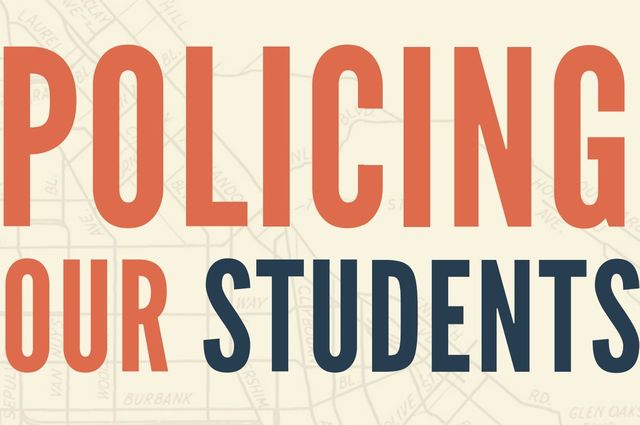A UCLA examination of 2014–17 data from the police department for the Los Angeles Unified School District shows that in those years 25 percent of those arrested were elementary- or middle school-aged and there was a significant disparity in police interactions for black students.
The “Policing our Students” report shows that the Los Angeles School Police Department, which covers the more than 600,000 students and 1,300-plus schools and facilities in the Los Angeles Unified School District, made 3,389 arrests while issuing 2,724 citations and 1,282 diversions from 2014 to 2017.
The data show that black students made up 25 percent of the total arrests, citations and diversions, despite representing less than 9 percent of the student population.
The analysis is produced by UCLA’s Million Dollar Hoods project, which uses local arrest and jail records to reveal the fiscal and human cost of mass incarceration in Los Angeles. For this report the researchers shifted their attention from the Los Angeles police and sheriff’s departments to the Los Angeles School Police Department, the largest department of its kind in the country and the fifth-largest police force in Los Angeles County.
“Two noteworthy features distinguish the practice of police in schools across the Los Angeles Unified School District,” said Terry Allen, who serves as oral history director and one of the lead researchers in the Million Dollar Hoods project and is a Ph.D. candidate in the UCLA Graduate School of Education & Information Studies.
“The first is its sheer scale,” he said. “Although arrests and citations are showing a slight decline, and what we call diversions, or alternatives to arrests and citations, are slightly increasing, the sheer number of student interactions with police is at odds with the purpose of education — to ensure that all students have the opportunity to learn.
“This racial disparity in contact with L.A. school police disrupts opportunities to learn for black students,” Allen said. Contact with law enforcement can also impair mental health and well-being, induce trauma, erode trust in the criminal justice system, and negatively impact educational achievement, advancement, and subsequent attainment.
Million Dollar Hoods is a project run by UCLA’s Bunche Center for African American Studies under the leadership of Kelly Lytle-Hernández, interim director of the center and professor of history. Using “big data,” Million Dollar Hoods researchers have documented how hundreds of millions of dollars are wasted every year on ineffective and inequitable law enforcement.
Los Angeles operates the largest jail system in the world, with more than 17,000 people on average caged nightly in county prisons and city jails. The Million Dollar Hoods project tracks how Los Angeles’ billion-dollar jail system budget is largely committed to incarcerating people from just a few neighborhoods. Million Dollar Hoods maps reveal that in some communities, local authorities are spending more than $1 million annually to lock up residents, and the results disproportionately affect minority populations. The Million Dollar Hoods team has also released reports breaking down cannabis enforcement by race, access to bail by race, and how authorities police homeless individuals.
This new report on the Los Angeles Unified School District’s police department underscores an important need for reform in the arena of school safety, Allen said. “Diversions” or community-based services and programs offered to students in lieu of arrests or citations are rising, but not rapidly enough.
“Many schools within LAUSD rely on school police and other security measures, as approaches to school discipline and safety,” he said. “But this is counter to much of the promises and rhetoric we hear about schools shifting from punitive approaches to discipline to more restorative approaches. A reliance on school police is ineffective to creating better conditions of learning and safety for students.”
Instead, he said, the district should direct funding toward increasing school counselors and community-based resources that improve the conditions for learning and safety.
“Helping schools to change the way they approach discipline and safety will also help encourage them to move away from correcting the behavior of students,” Allen said. “For example, many schools are failing our black students by ignoring the underlying causes of their behavior.”





